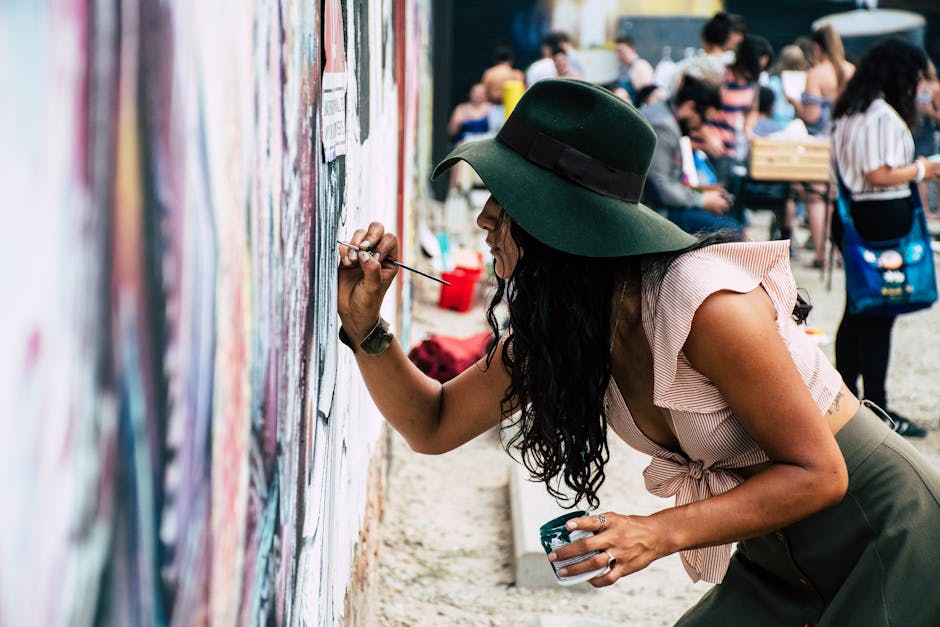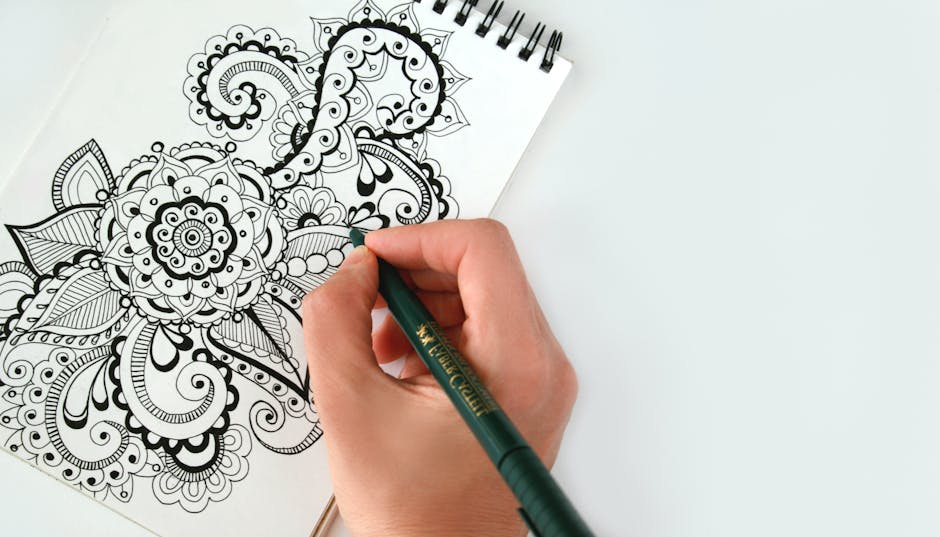Engaging in creative activities can offer a meaningful way to manage anxiety. By channeling emotions through various forms of art, individuals can experience psychological and physiological benefits that contribute to overall well-being.
Mechanisms of Creative Expression in Anxiety Relief
Engaging in creative expression can reduce anxiety by triggering various psychological and physiological responses. When individuals channel their anxiety through creative acts like painting or writing, they can experience an uplift in mood, partly due to the release of endorphins.
Creative activities often demand concentration and presence, promoting mindfulness. This immersive focus helps divert attention from anxious thoughts, fostering a sense of calm. For instance, coloring mandalas or detailed sketching can encourage staying in the present moment, alleviating anxiety.
The concept of 'flow state' also plays a role. When immersed in a creative activity, people often enter a state of complete absorption. This deep focus can suppress stress responses, reducing cortisol levels. A 2016 study found that just 45 minutes of artistic activity can significantly lower cortisol levels, regardless of skill level or experience.
Creative expression also facilitates emotional release and self-understanding. When words fail, art provides an alternative medium to externalize and process intense emotions. Activities like drawing or making collages allow individuals to visually communicate their internal states, making it easier to understand and manage their feelings.
Art therapy capitalizes on these mechanisms, helping clients unlock subconscious feelings and reinterpret their experiences. Practices like mandala coloring have shown efficacy in decreasing anxiety levels among various populations.
The physical act of creating art can be soothing. This tactile interaction, whether molding clay or guiding a paintbrush, can provide a grounding effect, distracting from anxious ruminations. The repetitive motions involved in these activities can be particularly calming.
Incorporating creative activities into daily routines doesn't just reduce anxiety acutely but also builds long-term resilience. It fosters a sense of accomplishment and self-efficacy, vital components for coping with anxiety.

Forms of Creative Expression Beneficial for Anxiety
Different forms of creative expression offer various benefits suited to individual preferences and needs. Let's explore some of these avenues and how they contribute to managing anxiety.
- Art therapy: Encompasses drawing, painting, sculpting, collage-making, and digital art. Each of these activities offers a non-verbal mode of communication, allowing people to process complex emotions creatively.
- Music therapy: Offers another compelling form of creative expression. Engaging with music—whether through playing an instrument, singing, or listening—can impact emotional well-being.
- Writing: A powerful medium for reducing anxiety. This includes journaling, poetry, or narrative storytelling. Writing allows individuals to structure their thoughts and feelings, often uncovering insights that were previously obscured.
- Crafting: Hobbies like knitting, crocheting, or sewing offer unique benefits. These activities require repetitive motions, which can be soothing and meditative.
- Sculpting: Working with clay can have significant therapeutic advantages. It engages both the mind and body, requiring focus and dexterity.
- Culinary arts: Cooking and baking are also forms of creative expression that can alleviate anxiety. These activities engage the senses, demand attention to detail, and provide a productive outlet for stress.
Each of these creative outlets serves as a therapeutic tool, suited to different preferences and needs. Incorporating even one of these activities into daily routines can provide a multifaceted approach to anxiety management.
Implementing Creative Practices in Daily Life
Incorporating creative activities into your daily routine can seem challenging at first, but it's not about producing a masterpiece – it's about the process and emotional release. Here are some practical tips to help you weave creativity into your everyday life:
- Start Small: Begin with something simple, like drawing for five minutes each day. Consistency is key rather than duration.
- Find Inspiration: Keep a journal or digital folder where you collect images, quotes, or ideas that spark your interest.
- Set Aside Time: Allocate a specific time in your day dedicated to creative activities. Treat this time as important as any other appointment.
- Make It a Ritual: Create a cozy environment—dim the lights, play calming music, or light a scented candle. These small rituals can help signal to your brain that it's time to relax and create.
- Use Everyday Moments: Doodle while on a phone call, hum a tune while cooking, or write a quick poem during lunch breaks.
- Join a Community: Connect with others who share similar interests through local art classes, online forums, or social media groups.
- Try Different Mediums: Experiment with various forms of creative expression to find what resonates with you.
- Seek Professional Guidance: Consider consulting an art therapist for personalized techniques suited to your emotional needs.
- Keep It Playful: Don't put pressure on yourself to create something perfect. Embrace the fun side of art.
- Reflect on Your Progress: Maintain a journal where you note your experiences, thoughts, and emotions linked to your creative activities.
By adopting these tips, you can make creative expression an integral part of your daily life, enhancing your ability to manage stress and anxiety. The journey of creative expression is personal and ever-changing, opening up possibilities for self-discovery and emotional relief.

Evaluating the Efficacy of Creative Expression for Different Demographics
Creative expression affects different demographic groups in unique ways. Let's examine its effectiveness across various populations:
Medical Students:
Medical students face intense academic pressure and emotional stress. Studies show that engaging in artistic activities can provide relief from their rigorous schedules. For instance, clay modeling and painting have been found to reduce stress levels among medical freshmen by promoting relaxation and mindfulness. These activities allow students to focus on the present moment, temporarily setting aside academic worries.
Creative expression also helps medical students develop better emotional regulation and self-awareness – crucial skills for future healthcare providers. By integrating artistic practices, medical schools can reduce stress and cultivate more empathetic and emotionally resilient doctors.
Patients with Mental Health Conditions:
Art therapy has shown remarkable efficacy in alleviating symptoms of anxiety, depression, and trauma. Visual journaling among psychiatric patients helps them articulate emotions and gain insights into their mental states. This non-verbal form of expression can be particularly beneficial for those who struggle to communicate their feelings through words.
Creative activities activate the brain's reward system, releasing dopamine and endorphins, which enhances mood and provides emotional relief. Patients with conditions such as schizophrenia and bipolar disorder often find solace in the freedom and flexibility of artistic expression.
General Populations:
For the general public, creative activities offer a versatile way to manage everyday stress and improve overall well-being. Whether it's through hobbies like knitting, cooking, or journaling, these activities provide a distraction from life's pressures and an opportunity to unwind.
Creative expression also fosters a sense of community and connection. Participating in group art classes or collaborative projects can build social bonds and reduce feelings of isolation. It allows individuals to explore personal identity and self-expression, leading to heightened self-esteem and confidence.
Scientific Studies and Insights:
Research supports the broad applicability of creative expression across these demographics. A study published in the Journal of the American Art Therapy Association found that brief periods of creative activity considerably lower stress levels across various age groups and social backgrounds.1
A study at Drexel University demonstrated that participants, regardless of their artistic background, experienced reduced cortisol levels after engaging in art-making for 45 minutes.2 This highlights that the therapeutic value of creative expression lies in the process itself, rather than the quality of the finished product.
In essence, creative expression offers specific benefits across different demographic groups, from stress relief and emotional regulation to improved social connections and self-awareness. By embracing creativity, individuals can harness its healing potential, fostering resilience and enhancing their mental health in an accessible manner.
The interplay between endorphins, mindfulness, flow state, and emotional expression makes creative activities a powerful tool for anxiety relief. These artistic endeavors enable individuals to process and mitigate their anxiety through a holistic approach that bridges both mind and body.
- Kaimal G, Ray K, Muniz J. Reduction of cortisol levels and participants' responses following art making. Art Ther. 2016;33(2):74-80.
- Kaimal G, Gonzaga AML, Schwachter V. Crafting, health and wellbeing: findings from the survey of public participation in the arts and considerations for art therapists. Arts Health. 2017;9(1):81-90.























